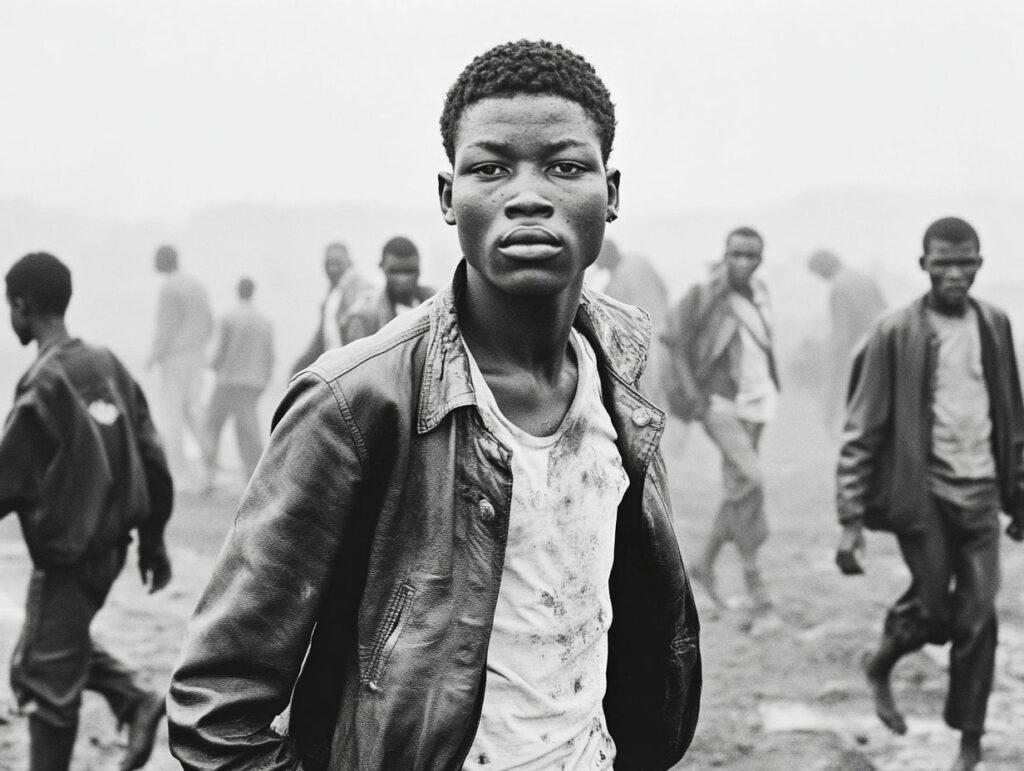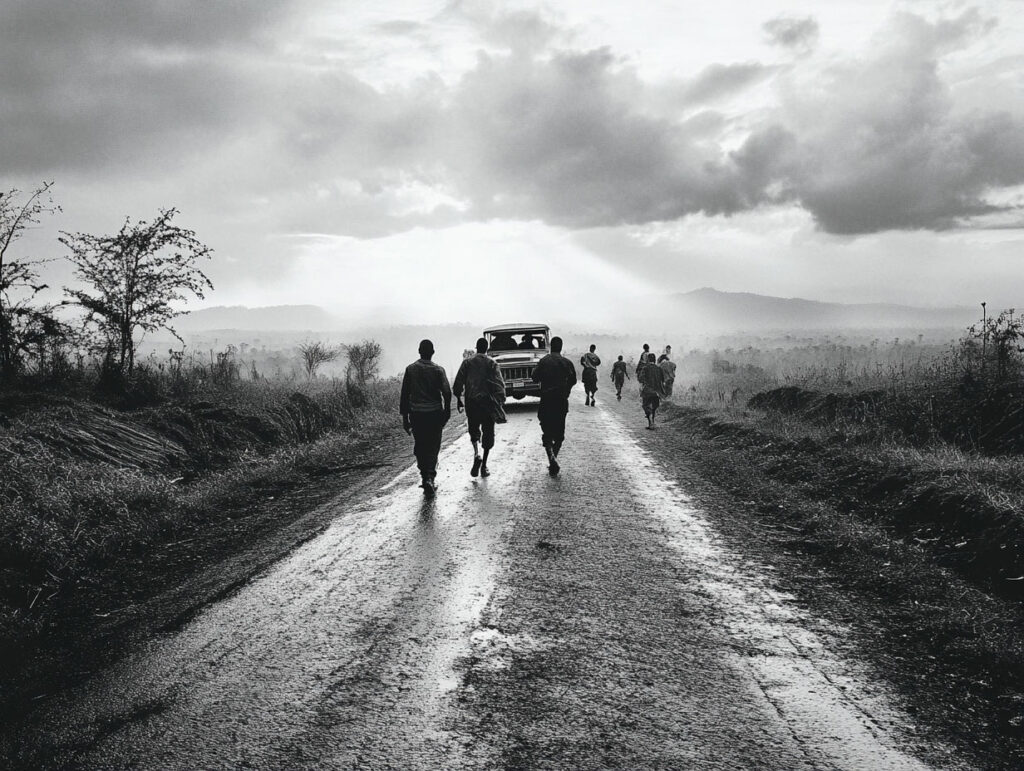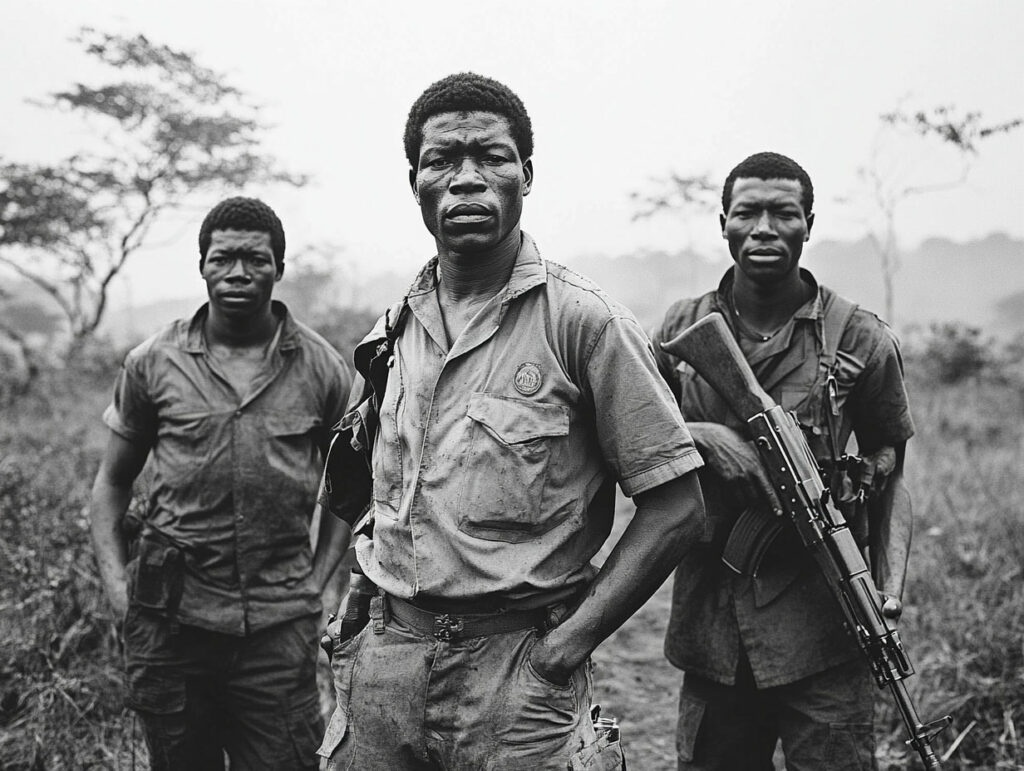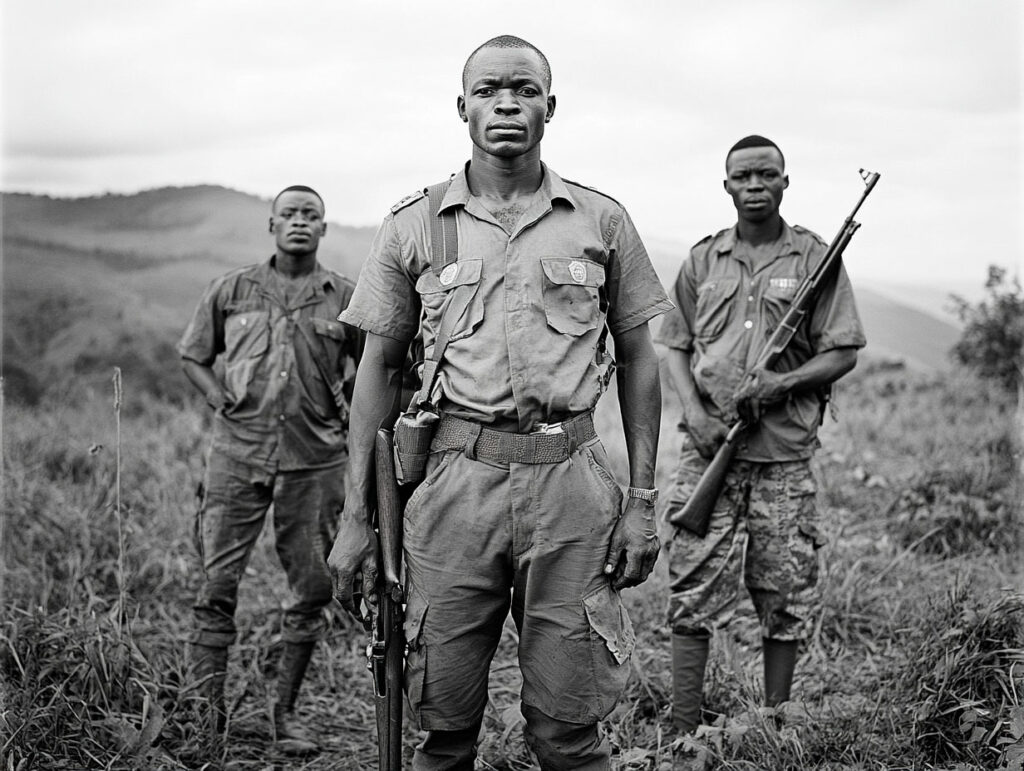An in-depth exploration of the Second Congo War, detailing its causes, key players, major battles, and lasting consequences.
The Second Congo War, spanning from 1998 to 2003, was one of the deadliest conflicts since World War II, involving multiple African nations and resulting in millions of deaths, primarily from disease and starvation. The war began when Congolese President Laurent-Désiré Kabila expelled Rwandan and Ugandan forces, leading to invasions by these former allies. The conflict drew in nine African countries and numerous armed groups, each vying for control over the Democratic Republic of Congo’s vast mineral resources. Major battles, such as the Battle of Pweto, highlighted the war’s intensity. The assassination of Kabila in 2001 and subsequent peace agreements, including the Sun City Accords, eventually led to a transitional government. Despite formal peace, the region remains unstable, with ongoing violence and humanitarian crises.

What Were the Reasons for the Second Congo War (1998–2003)
The Second Congo War’s origins are rooted in a complex interplay of political, ethnic, and economic factors. Following the First Congo War (1996–1997), Laurent-Désiré Kabila became president of the Democratic Republic of Congo (DRC) with support from Rwanda and Uganda. However, tensions escalated when Kabila distanced himself from his former allies, expelling Rwandan and Ugandan forces in 1998. This move was perceived as a threat by Rwanda and Uganda, especially given the presence of Hutu militias in eastern DRC, which had participated in the 1994 Rwandan genocide.
The expulsion led to invasions by Rwanda and Uganda, who supported rebel groups like the Congolese Rally for Democracy (RCD) and the Movement for the Liberation of Congo (MLC). These groups aimed to overthrow Kabila’s government, citing concerns over security and governance. In response, Kabila garnered support from Angola, Zimbabwe, Namibia, Chad, and Sudan, turning the conflict into a continental war.
Control over the DRC’s vast mineral wealth, including diamonds, gold, and coltan, further fueled the conflict. Various factions exploited these resources to finance their military operations, leading to widespread economic exploitation and corruption.
Ethnic tensions also played a significant role. In regions like Ituri and the Kivus, historical rivalries between communities, such as the Hema and Lendu, were exacerbated by the war, leading to localized conflicts and massacres.
The Second Congo War was ignited by political betrayals, security concerns, competition over natural resources, and deep-seated ethnic divisions. These factors combined to create a protracted and devastating conflict that drew in multiple nations and caused immense human suffering.
Who Was Involved in the Second Congo War (1998–2003)
The Second Congo War involved a complex web of national armies, rebel groups, and militias. On one side, the Congolese government, led by Laurent-Désiré Kabila and later his son Joseph Kabila, received military support from Angola, Zimbabwe, Namibia, Chad, and Sudan.
Opposing them were rebel groups backed by Rwanda and Uganda. The Congolese Rally for Democracy (RCD), primarily supported by Rwanda, and the Movement for the Liberation of Congo (MLC), backed by Uganda, were the main rebel factions. These groups aimed to topple the Kabila regime and gain control over resource-rich regions.
Numerous local militias, such as the Mai-Mai, also participated, often shifting alliances and contributing to the conflict’s complexity. Ethnic militias, including the Hema and Lendu in Ituri, engaged in brutal intercommunal violence, further destabilizing the region.
The United Nations deployed the United Nations Organization Mission in the Democratic Republic of the Congo (MONUC) to monitor ceasefires and protect civilians. However, the mission faced challenges due to the vastness of the territory and the multitude of armed actors.
In total, nine African nations and numerous armed groups were directly involved in the conflict, making it one of the most complex and deadly wars in modern African history.

The Leaders of the Second Congo War (1998–2003)
The conflict brought to the forefront a group of military and political leaders from both the Democratic Republic of Congo (DRC) and neighboring states. Each had specific motivations tied to national interests, personal power, and control over natural resources.
On the Congolese side, Laurent-Désiré Kabila became president in 1997 after overthrowing Mobutu Sese Seko. Initially supported by Rwanda and Uganda, Kabila quickly turned against them by expelling foreign troops in 1998. His rule became increasingly centralized and authoritarian. His assassination in January 2001, by a member of his own security detail, ended his presidency during the height of the war.
His son, Joseph Kabila, succeeded him at age 29. Though inexperienced, he shifted strategy. He sought diplomatic solutions and opened dialogue with foreign governments and rebel factions. Under his leadership, the DRC moved toward peace talks that would eventually lead to a transitional government in 2003. He also gained strong backing from Western governments and the United Nations.
Among the rebel leaders, Jean-Pierre Bemba led the Movement for the Liberation of Congo (MLC). Backed by Uganda, Bemba controlled the northern regions of the country and maintained a well-organized militia. He later joined the transitional government as one of four vice-presidents. Ernest Wamba dia Wamba initially headed the Rally for Congolese Democracy (RCD), which was heavily supported by Rwanda. However, internal divisions led to the emergence of rival factions. Azarias Ruberwa eventually led the RCD-Goma faction, and Antipas Mbusa Nyamwisi headed RCD-Kisangani, later known as RCD-ML.
From the neighboring states, Paul Kagame, president of Rwanda, played a central role. His government aimed to eliminate Hutu militias operating from Congolese territory. Yoweri Museveni, Uganda’s president, supported Bemba and maintained military presence in eastern Congo, often clashing with Rwandan forces. Robert Mugabe of Zimbabwe, José Eduardo dos Santos of Angola, and Sam Nujoma of Namibia deployed troops in support of Kabila, citing defense pacts and regional security.
These leaders shaped the war through military alliances, resource extraction deals, and shifting political strategies. Their decisions prolonged the conflict, influenced the regional balance of power, and shaped the outcome of peace negotiations.
Was There a Decisive Moment ?
There was no single battle that ended the war, but several moments significantly altered its course. One of the earliest major developments occurred in August 1998, when Rwanda and Uganda launched simultaneous invasions into eastern DRC. They moved quickly toward Kinshasa, nearly capturing the capital before being pushed back by Zimbabwean and Angolan forces. This early phase showed how quickly alliances had shifted since the end of the First Congo War just one year earlier.
Another key turning point came with the assassination of Laurent-Désiré Kabila on 16 January 2001. He was shot by one of his own bodyguards inside the presidential palace. His sudden death could have deepened the chaos, but instead, Joseph Kabila, then just 29 years old, took power with support from international allies. His presidency introduced a new phase of diplomacy and partial de-escalation.
In April 2002, Joseph Kabila signed the Pretoria Accord with Rwanda. This agreement included the withdrawal of Rwandan troops in exchange for disarmament of Hutu militias operating in Congo. A few months later, Uganda and the DRC signed the Luanda Agreement, which made similar commitments. These treaties represented a move away from full-scale warfare and toward negotiated settlements.
By 2003, the Sun City peace process led to the formation of a transitional government that included former rebel leaders like Jean-Pierre Bemba as vice president. Although fighting continued in parts of the east, this agreement formally ended the war at the national level.
These events—from the failed assault on Kinshasa, to Laurent Kabila’s death, and the eventual peace accords—marked the war’s major turning points. None ended the conflict immediately, but each shifted the balance of power, opened diplomatic channels, and paved the way for a political resolution. The decisive shift was less a single event and more a gradual erosion of military options, combined with regional fatigue and international pressure for a settlement.


Major Battles of the Second Congo War (1998–2003)
Several key battles defined the military phase of the Second Congo War. These engagements were often brutal, involved conventional armies as well as militias, and usually occurred in mineral-rich or strategically vital areas.
One of the first significant confrontations occurred during the Battle of Kinshasa in August 1998. Rwandan and Ugandan-backed rebel forces from the RCD advanced rapidly toward the capital. However, Angolan, Zimbabwean, and Namibian troops were flown in to support Kabila’s forces. They halted the offensive within weeks. The battle resulted in heavy casualties and solidified foreign involvement on both sides.
In 1999, the Battle of Kisangani became one of the most symbolic and costly battles. It involved Ugandan and Rwandan forces, nominally allies, who clashed violently over control of this northeastern city. Between June 5 and June 10, the two armies engaged in urban warfare. Over 1,000 civilians were killed, and significant portions of the city were destroyed. The battle revealed the breakdown in the alliance between Rwanda and Uganda, turning the war into a three-way competition among regional powers.
The Battle of Pweto in 2000 in southeastern Congo also marked a strategic moment. Congolese government troops, supported by Zimbabwean forces, launched an operation against the RCD-Goma. Despite initial success, the town changed hands multiple times. Pweto was crucial due to its position near Katanga, a region rich in copper and cobalt. The battle lasted for weeks and resulted in high casualties on both sides.
The Ituri conflict, while not a single battle, saw some of the most intense and ethnically driven violence. Between 1999 and 2003, the Hema and Lendu militias fought in northeastern DRC, resulting in tens of thousands of deaths. Foreign actors like Uganda supported local proxies. Battles around Bunia in particular were marked by atrocities and widespread civilian massacres.
Another noteworthy clash was the 2002 Nyunzu offensive in Katanga province, where government forces fought Mai-Mai militias for control over mining zones. Although this operation was smaller in scale, it underscored how economic interests dictated military strategy.
Throughout the war, battles were rarely decisive. Frontlines shifted constantly, alliances were fluid, and logistical challenges prevented prolonged engagements. Nevertheless, these battles caused immense destruction, displaced millions, and further fragmented an already unstable region.
Was There a Turning Point ?
A key turning point in the Second Congo War came with the assassination of Laurent-Désiré Kabila in January 2001. His presidency had failed to establish a strong central authority or secure peace. His approach alienated former allies and internal opponents. His death removed a leader who resisted compromise and opened the door to a more pragmatic phase of conflict resolution.
His son Joseph Kabila took over with backing from military and political figures. Though young and inexperienced, he quickly sought international legitimacy and pursued diplomatic solutions. This shift in leadership brought immediate changes. Joseph Kabila resumed peace talks and accepted the involvement of external mediators. His support for the UN mission (MONUC) strengthened its mandate and reach.
In April 2002, the Pretoria Accord was signed between Rwanda and the DRC. It marked a shift away from open warfare. Rwanda agreed to withdraw troops in exchange for action against ex-FAR and Interahamwe groups. In September 2002, the Luanda Agreement between Uganda and the DRC produced similar commitments. These treaties reduced cross-border military incursions and allowed negotiations to gain traction.
Another important development came with the Sun City Agreement in April 2002. It brought together the Congolese government and major rebel groups. The agreement didn’t resolve all issues, but it laid the foundation for a transitional government. By 2003, a power-sharing administration was formed, with four vice-presidents representing different factions, including rebel leaders like Jean-Pierre Bemba.
International pressure also increased, especially from South Africa, the United Nations, and the African Union. Donor countries made financial support contingent on reforms and peace progress. By 2003, most foreign armies had begun withdrawing, and the UN mission expanded.
The combination of Kabila’s assassination, his successor’s diplomacy, regional fatigue, and international engagement marked the war’s turning point. These events didn’t stop violence in eastern Congo, but they ended full-scale war and enabled a shift to peacebuilding and transitional governance. The turning point was political, not military, and reflected a broad consensus that continued war offered diminishing returns for all parties involved.
Consequences of the Second Congo War (1998–2003)
The Second Congo War caused immense human, political, and economic damage. With an estimated 5.4 million deaths, mostly from preventable causes like starvation and disease, it was the deadliest conflict since World War II. Most fatalities occurred due to the collapse of infrastructure, health services, and supply chains. The eastern provinces, especially North Kivu, South Kivu, Ituri, and Katanga, were the worst affected.
The war led to the mass displacement of over 3 million people, many of whom still live in refugee camps across the DRC and neighboring countries. Local economies were destroyed. Agricultural production collapsed in large areas, and transport networks disintegrated. Towns like Kisangani, Pweto, and Bunia were heavily damaged by combat.
Politically, the war weakened the Congolese state. Despite the formation of a transitional government in 2003, the country remained fragmented. Power-sharing between former enemies led to rival administrations within the same government. Joseph Kabila managed to hold elections in 2006, but authority remained weak, especially in the east.
The conflict also entrenched foreign interference in Congolese affairs. Rwanda and Uganda withdrew formally but retained strong influence through proxy groups and economic networks. Armed groups continued to operate in eastern DRC, supported by regional actors and financed through illicit trade in minerals, especially gold, diamonds, and coltan.
One lasting consequence is the continuation of conflict in eastern Congo. Militias such as the FDLR, CNDP, and M23 emerged from war-era structures. These groups have perpetuated instability and caused new waves of violence and displacement.
The war also prompted the expansion of the UN peacekeeping mission. MONUC, later renamed MONUSCO, became the largest UN operation in the world. Its presence stabilized some areas but failed to dismantle armed groups or restore full state control.
Finally, the war altered international perspectives on African conflicts. It exposed the regional and economic dimensions of warfare, leading to increased attention on conflict minerals, war crimes, and governance reform. Although the main war officially ended in 2003, its consequences are still visible in ongoing violence, institutional weakness, and social trauma across the Democratic Republic of Congo.
Back to the Wars section